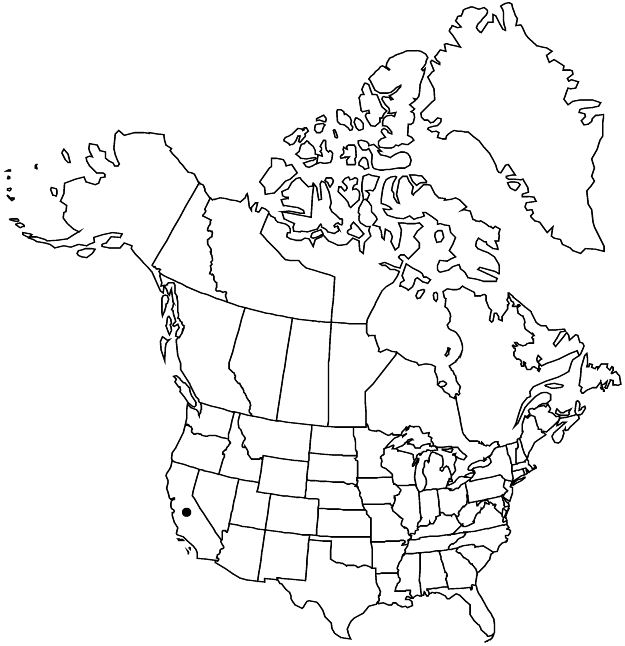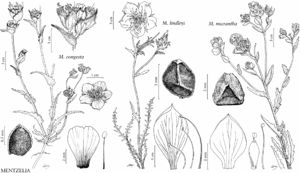Difference between revisions of "Mentzelia micrantha"
Fl. N. Amer. 1: 535. 1840.
imported>Volume Importer |
imported>Volume Importer |
||
| Line 57: | Line 57: | ||
|publication year=1840 | |publication year=1840 | ||
|special status=Illustrated | |special status=Illustrated | ||
| − | |source xml=https:// | + | |source xml=https://bitbucket.org/aafc-mbb/fna-data-curation/src/2e0870ddd59836b60bcf96646a41e87ea5a5943a/coarse_grained_fna_xml/V12/V12_448.xml |
|genus=Mentzelia | |genus=Mentzelia | ||
|section=Mentzelia sect. Trachyphytum | |section=Mentzelia sect. Trachyphytum | ||
Latest revision as of 19:15, 5 November 2020
Plants wandlike or candelabra-form, 10–80 cm. Basal leaves persisting; petiole present or absent; blade lanceolate to linear, margins irregularly deeply lobed to dentate. Cauline leaves: petiole present or absent (proximal leaves), absent (distal leaves); blade lanceolate to linear (proximal leaves), orbiculate to lanceolate (distal leaves), to 18 cm, margins irregularly deeply lobed to dentate proximally, dentate or entire distally. Bracts green, orbiculate to ovate, 3.4–6.6 × 2.5–5.9 mm, width 3/4 to ± equal length, often concealing capsule, margins sinuate or entire. Flowers: sepals 1–3 mm; petals yellow, 2-5 mm, apex acute; stamens 10–20, 1.5–4 mm, filaments heteromorphic, 5 outermost elliptic, distally 2-lobed, inner filiform, unlobed; styles 2–3(–5) mm. Capsules cylindric, 6–13 × 1.5–2.5 mm, axillary curved to 20° at maturity, usually inconspicuously, occasionally prominently, longitudinally ribbed. Seeds 4–10, in 1 row distal to mid fruit, dark brown or tan, dark-mottled, triangular prisms, surface ±smooth to minutely tessellate under 10× magnification; recurved flap over hilum absent; seed coat cell outer periclinal wall flat. 2n = 18.
Phenology: Flowering Apr–Jun.
Habitat: Open, often recently-burned or disturbed chaparral or oak woodlands.
Elevation: 0–2300 m.
Distribution

Calif., Mexico (Baja California).
Discussion
Mentzelia micrantha is easily distinguished from other species in sect. Trachyphytum by the presence of two lateral lobes on the filaments of the five outermost stamens. This characteristic is distinct from the filament lobes of some species in sect. Bicuspidaria, which occur on all or most stamens. Phylogenetic studies have found that M. micrantha is not closely related to species in sect. Bicuspidaria (L. Hufford et al. 2003; J. M. Brokaw and Hufford 2010).
Selected References
None.
